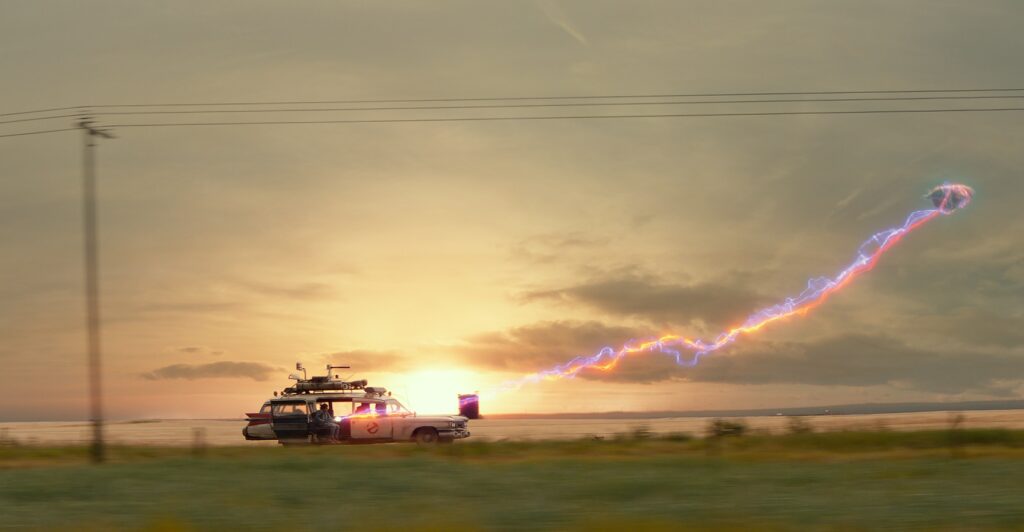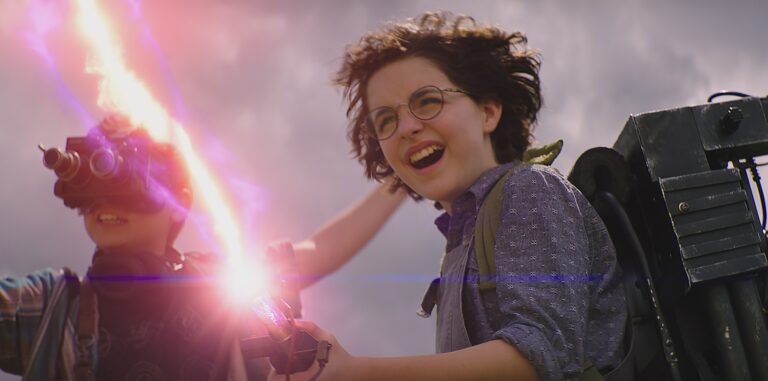The universally maligned Ghostbusters (2016) reboot was proof to the studios of one thing: if the franchise is going to survive, it’s time to go back to its roots. Ghostbusters: Afterlife does just that — to a fault — by reuniting the original cast and even bringing on Jason Reitman, son of the original film’s director, to helm this fan service-heavy film.
Billed as “the next chapter in the Ghostbusters universe,” the film sees a single mom and her two kids forced to move to a small town after their grandfather passes away, where they begin to discover their connection to the original Ghostbusters amid a growing supernatural threat. It won’t take long for any viewer to figure out the connection, so it’s a bit odd that Ghostbusters: Afterlife tries to sit on the secret for as long as it does.
Much of the film frustratingly plays out in similar fashion. Ghostbusters: Afterlife gets so many things right, and at certain points feels like a brilliant successor to the original film, but it takes everything one step further than needed. There’s too much nostalgia pumped in, they go back to certain jokes too many times, and the callbacks are constant (and at times, eye-roll inducing). Jump scares are also the preferred delivery for the horror in the film and wear out their welcome extremely fast.
But for all the hair pulling mistakes, there are some truly great surprises. Young McKenna Grace is wonderful as the on-the-spectrum, awkward Phoebe, who comes into her own when she discovers the mystery of the Ghostbusters. The special effects are terrific throwbacks to the designs and spirit of the original film, complete with the welcome return of occasional practical effects, and the overall film, especially the climax, is a gently handled and loving tribute to Harold Ramis.
Ghostbusters: Afterlife also looks fantastic with the small town setting and spooky house location, creating great shots that still feel like Ghostbusters, but completely flip the vibe from the urban New York City setting of the original entries. But much like everything in the movie, things fall apart when the setting switches to ancient caves, and the story decides to re-hash the Gozer, Keymaster and Gatekeeper climax from the original.

As summer school teacher and Ghostbusters fanboy Gary, poor Paul Rudd is in far less of the film than the marketing suggests, getting swept into the mystery of the town’s earthquakes and its Ghostbusters connection. He starts out as a child-like friend and mentor to the kids and ends up being a goofball stand-in for Rick Moranis’s Tully from the original film.
Speaking of the kids, Ghostbusters: Afterlife stuffs far too many of them into the film in perhaps an attempt to create a Stranger Things vibe. All the film needed was the main two kids, Phoebe and her older brother Trevor, played by Finn Wolfhard of the aforementioned Netflix series. The young actor spends a lot of the early film being an annoying jerk to his sister and the rest trying to woo a love interest. Not the actors’ best role and the character is most interesting when he’s on his own joy-riding in the Ecto-1.
The film would’ve been much stronger if they focused on the siblings’ bond instead. They give even Phoebe an annoying love interest in her classmate, the self-named “Podcast” (Logan Kim) and yes, that’s his name and yes, he has a podcast. He’s by far the most pandering part of Ghostbusters: Afterlife with plenty of lame humor and over-the-top reactions.
The music cues are there and still provide ample goosebumps and the cast cameos are great fun, but also overdone like everything else in the film. Ghostbusters: Afterlife doesn’t just lean on nostalgia as a crutch, it sets the firm weight of 30 years of beloved fandom firmly on top of it. The post-credits scene predictably sets up an intriguing enough potential franchise direction for Dan Aykroyd’s Ghost Corps production company to continue making these films, and with this one so close to nailing it, hopefully they get another shot to finally make a great Ghostbusters film with no baggage.
Score: 3 out of 5

